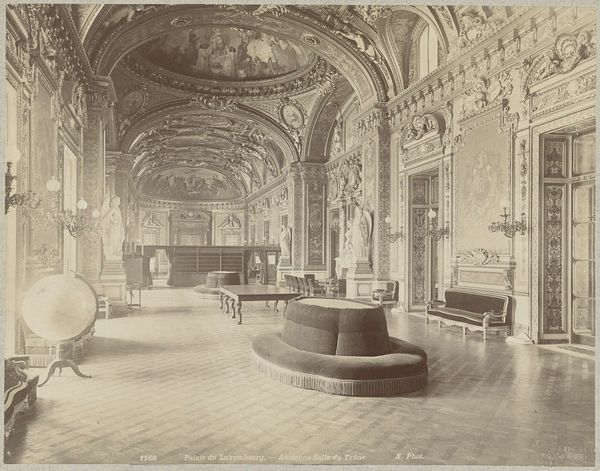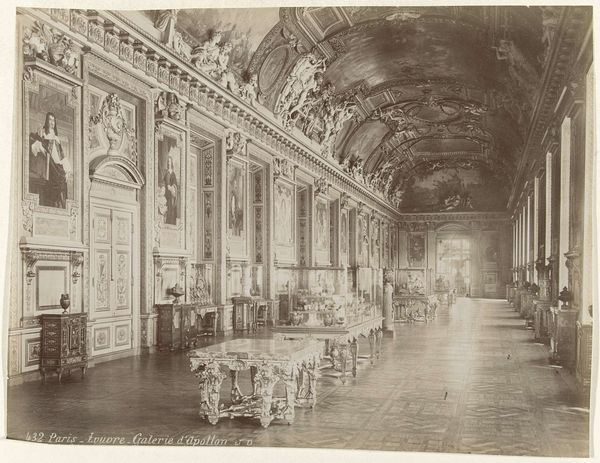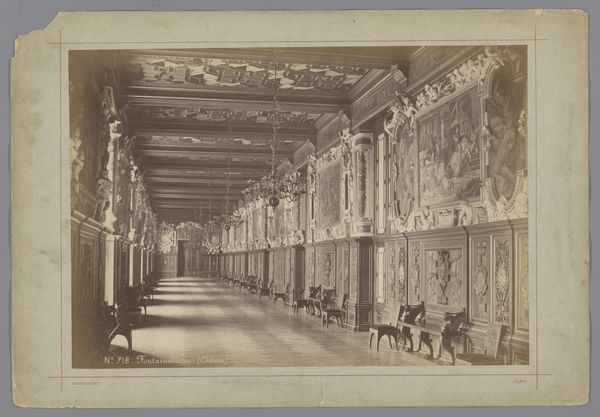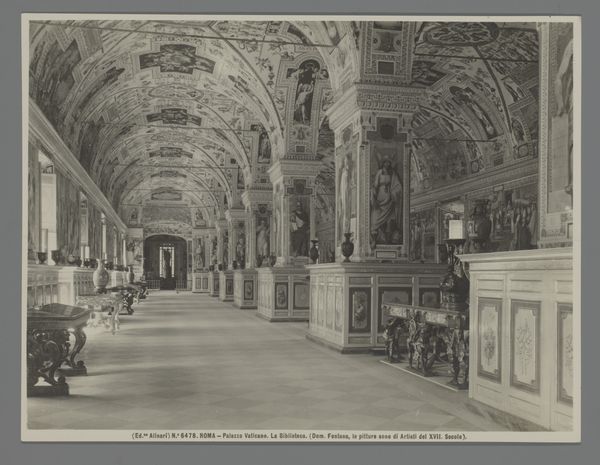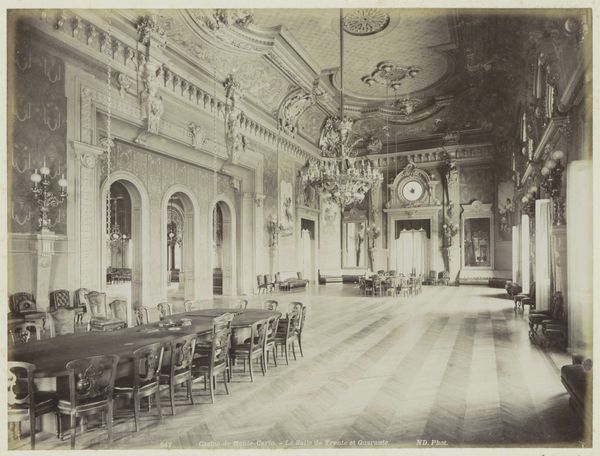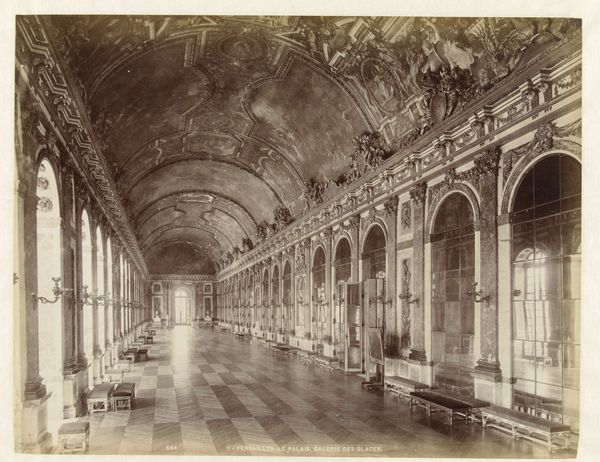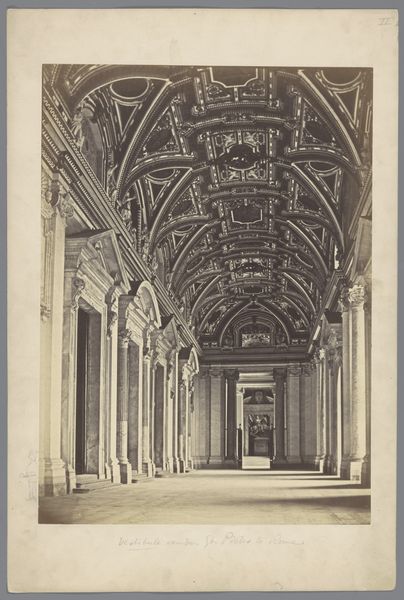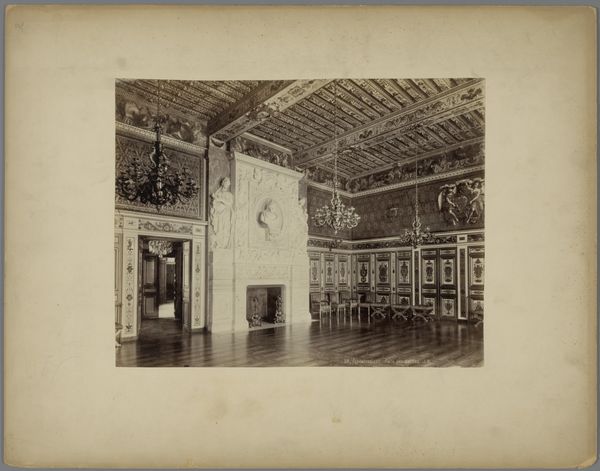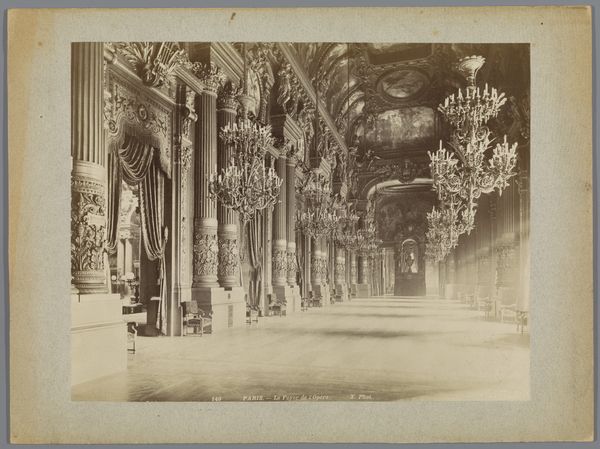
Dimensions: height 118 mm, width 185 mm
Copyright: Rijks Museum: Open Domain
Curator: This gelatin silver print, entitled "Galerij in het Louvre, Parijs", was captured sometime between 1887 and 1900. The photographer signed only as X phot. What are your initial impressions? Editor: My first thought is "excess." The photograph is overwhelmingly opulent—all that ornamentation receding into the distance. The parquet floor looks almost liquid. Curator: It's quite a scene, isn't it? When viewed through a contemporary lens, the composition invites a broader conversation about museums and their roles in perpetuating specific power structures and colonial narratives through the act of display. Editor: I see your point. But at the same time, looking at the grain and tonality, I am drawn to the materiality of the gelatin silver print itself. Consider the labor involved in producing such a refined image, the alchemy of photography as it was practiced then. It connects the high art on display with the skills of production. Curator: Absolutely. And the image itself freezes a moment within a very specific space. "Galerij in het Louvre, Paris" begs questions about who has access to these spaces. Who is welcome and whose stories are amplified within its walls, particularly in an era grappling with issues of social inequality? Editor: It is all there—opulence, access, and materiality, all framed by the gaze of the photographer and then fixed with silver on paper. The high-resolution of the photo is interesting, too, showing not only the sculptures, but also the wood grain and individual brushstrokes within paintings hanging on the wall. The craft extends to architecture. Curator: Yes, this artwork invites us to explore how identity and status intersect with place and representation. What stories are told here? And whose perspectives are centered—or silenced—within this seemingly neutral gallery space? Editor: Seeing these treasures carefully displayed within this gilded hall makes me ponder on the relationship between art, labor, and history. Curator: Exactly. It compels us to critically reflect on how art and museums participate in shaping our cultural narratives, while asking crucial questions about historical and ongoing power dynamics. Editor: It’s a fascinating and very ornate reminder to consider all the elements and ideas behind what we consume.
Comments
No comments
Be the first to comment and join the conversation on the ultimate creative platform.


